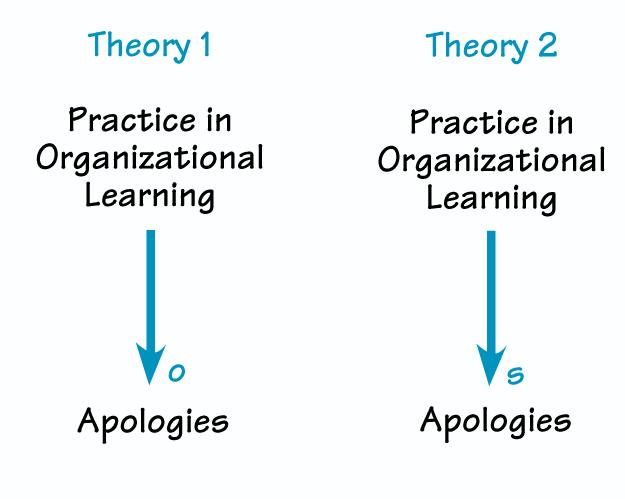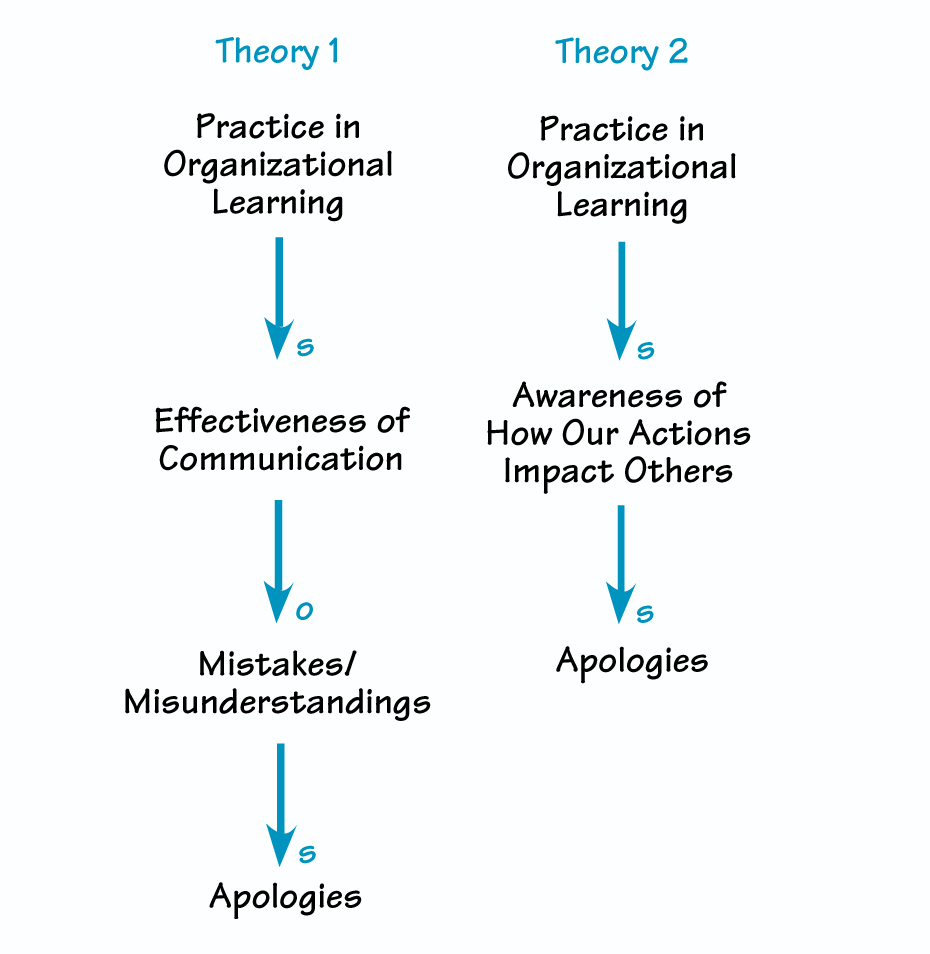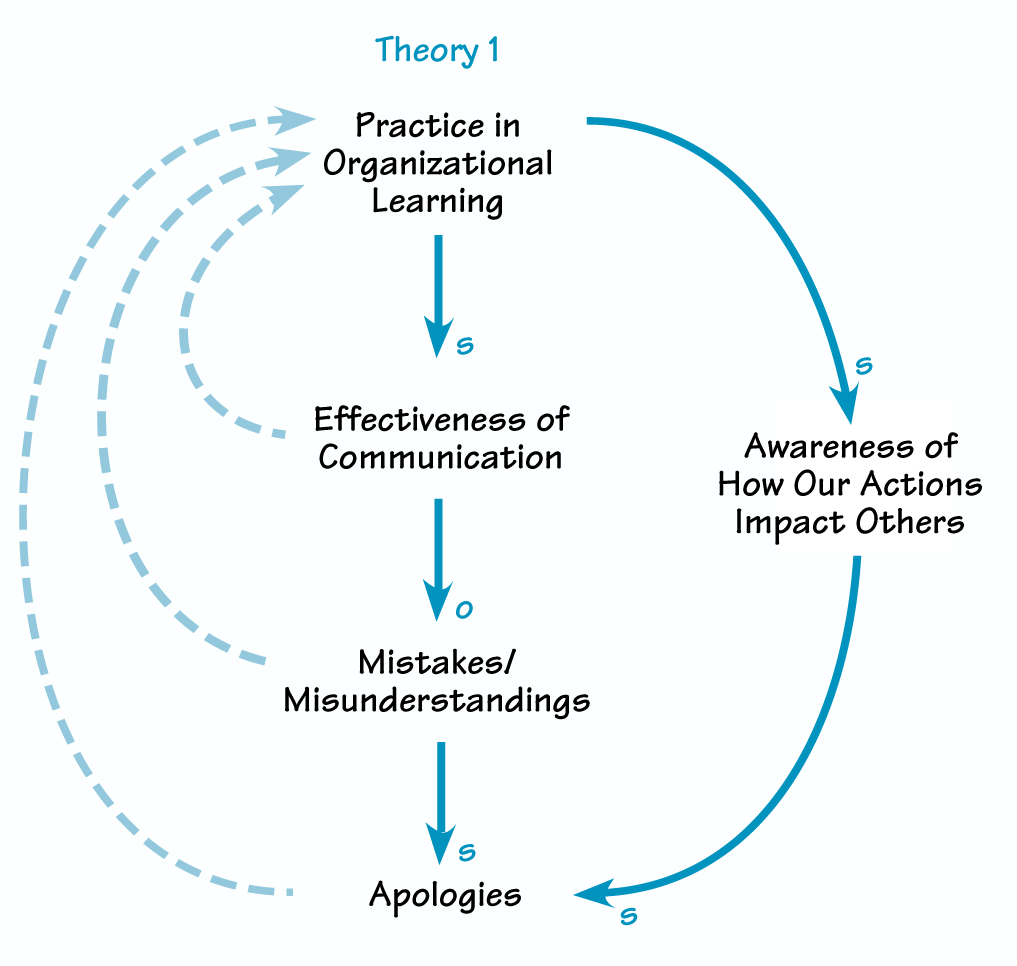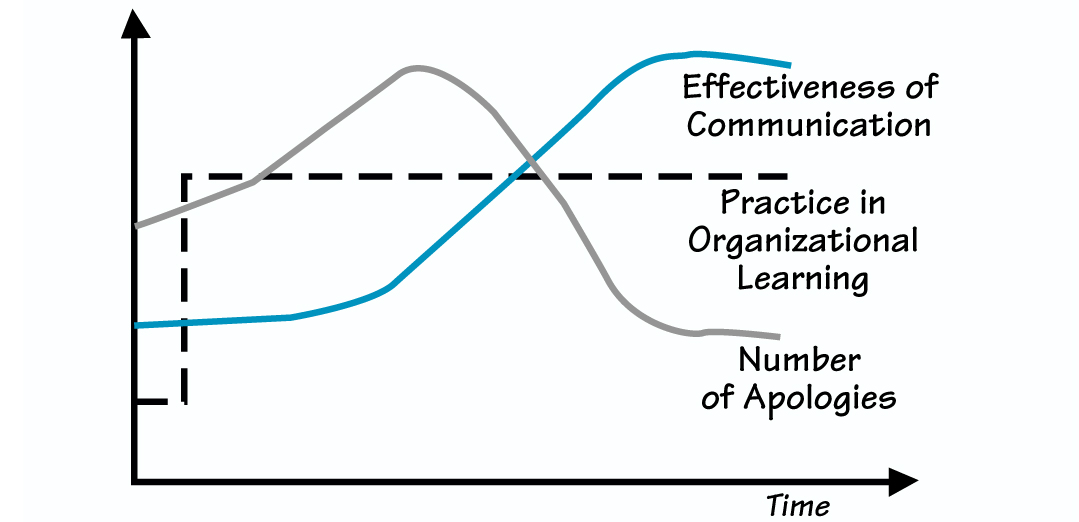A common approach for using systems thinking in a group setting is to set aside a specific time to explore a significant issue containing some degree of dynamic complexity (where cause and effect are distant in time and space). Once the team is assembled, a facilitator assists the group in surfacing the issues, identifying variables, graphing behavior over time, and developing a causal loop diagram. While this process certainly helps in tackling the “big” issues, systems thinking tools can also be effective in helping groups clarify issues “on-line” during meetings and informal conversations.
In using systems thinking effectively on-line, the first step is to recognize when it is appropriate and can add value to a discussion. One way to do this is to listen for competing (or divergent) hypotheses about a specific problem, which can then be explored using the tools of systems thinking.
Recognizing Competing Hypotheses
Although we might not realize it, we are formulating causal theories all the time. Statements such as “more police officers will reduce crime,” or “if you exercise more, you’ll lose weight,” are theories indicating that a particular action will cause a specific result. For example, I would be making a causal theory if I said, “Increasing our change efforts will lead to a better quality product.” However, my colleague may feel that increasing our change efforts will actually diminish the quality of the product. Now we have competing hypotheses: two statements that presume a different dynamic outcome from the same action. When competing hypotheses surface, it usually suggests there are different assumptions (or collective uncertainty) about the consequences of an action over time.
Exploring a Case
To illustrate how to listen for dynamic complexity — and how to use systems thinking to explore competing hypotheses—let’s look at an example from an experience at Philips Display Components. During a team meeting, an interpersonal “incident” occurred that led to heated comments from several participants. After it was over, the people involved apologized to one another for the emotional way they had reacted. Since this team was practicing using organizational learning tools at the time, it seemed only natural to discuss how their new skills would affect behaviors such as public apologies. One person thoughtfully commented, “The more we invest in this [learning] stuff and the better we get, the fewer apologies we will see.” Another person immediately responded, “I completely disagree. The more we practice these techniques, the more public apologies we will see.”
Once these two contradictory views were stated, the team was presented with a choice — to spend energy trying to resolve the tension, or to move on. In this particular case, both parties glared at each other for a moment, and the conversation shifted.
But the team missed out on an important discussion — because in the future, if the number of apologies in the organization increased, one person would think the investment in organizational learning had been successful, while the other person might conclude that organizational learning had actually made things worse. These kinds of contradictory statements are clues to listen for when looking for opportunities to use systems thinking “on-line.”
Exploring Multiple Hypotheses
The process of exploring and clarifying contradictory theories can be broken down into four steps, from explicitly describing each of the theories separately to showing how they might actually fit together. By integrating the theories into a common systems diagram, a group can move beyond the conflict of seemingly incompatible ideas and begin exploring the possibility that there can be multiple consequences of an action, and that these outcomes can occur at different times.
Step 1: Diagram Each Theory Separately
The first step is to diagram each theory separately, using links to show causal connections between the different elements in the theory. For example, the first person’s suggestion that organizational learning would lead to fewer apologies can be mapped as a link between organizational learning and apologies that is labeled with an “o” to indicate a change in the opposite direction (see “Competing Hypotheses”). The second person’s theory would look identical, except that the link would be labeled “s” (a change in the same direction) to indicate his view that as organizational learning increases, so will apologies. At this level of abstraction, the two theories are diametrically opposed, and only one of them can be considered “right.”
COMPETING HYPOTHESES

Step 2: Inquire into the Line of Reasoning and Expand Theories
The next step is to explore the reasoning behind each theory and clarify the link between the two variables. Lack of understanding of the nature of a link often leads to confusion in a group. When this occurs, it is usually necessary to rename the variables, or to insert an intermediate term (or two) between the variables. For example, we might find that the first person believes that practice in organizational learning will lead to more effective communication, which will lead to fewer mistakes and misunderstandings, thus requiring fewer apologies (see “Expanding the Theories”). The second person, on the other hand, may feel that practice in organizational learning will lead to an increased awareness of how our actions impact others, leading to more apologies.
EXPANDING THE THEORIES

With a fuller description of both theories, we can see that they are not necessarily contradictory. In fact, both of these causal connections exist between organizational learning and apologies.
Step 3: Integrate the Theories and Identify Time Delays
Depending on which of these scenarios we look at, we could reasonably assume that increasing practice in organizational learning can actually increase and decrease the rate of apologies — but not at the same time. Oftentimes, a difference in causal theories results because people are looking at the same phenomenon, but over a different time span. To make these differences more explicit, we need to refine the diagrams by noting any significant time delays between links. In this example, we might conclude that developing effective communication takes significantly more time than just becoming more aware of the impact of our actions. So now we can bring the theories together and look at the issue within a common framework (see “Integrating the Theories”).
In drawing the single system and clarifying your discussion “on-line,” it is important to note that it is okay to leave the links “open.” Don’t feel compelled to close the causal paths just for the sake of creating feedback loops. The goal of this process is just to express the line reasoning behind each theory, so try to keep things as simple as possible. Even as open loops, this use of systems thinking can generate a collective theory about the consequences of a change in the system. But if you want to continue to explore this issue from a systems thinking perspective, it is important to go further and look at how the feedback loops actually close. To complete the loops, you would want to ask the question, “How do any of these variables come back to influence the original factor?” For instance, how does the observed number of apologies influence the time and resources put into practicing organizational learning?
INTEGRATING THE THEORIES

Step 4: Estimate What Will Happen over Time
Creating a good causal theory is useful for developing our sense of the possible dynamic consequences of an action. To begin thinking about this future behavior, we might ask the question, “Which causal ‘path’ is dominant at what time?” After an increase in organizational learning practice, we would expect that awareness would go up at first, causing the number of apologies also to increase. After a significant time delay, communication skills would increase, which would cause the apologies to go down (see “Mapping the Behavior”).
MAPPING THE BEHAVIOR

Rather than leaving the discussion with separate and contradictory theories on the relationship between apologies and effective organizational learning, everyone now can see a single theory that contains both sets of assumptions. Both causal connections are real; we just expect them to be dominant at different times. In this case, although the individuals seemed to be saying contradictory things on the surface, both could be right about their predictions if they were simply thinking in different time frames.
Don Seville (dsevilla@sustainer.org) is a project manager at Sustainability Institute, a consulting, training, and research center focused on social, economic, and environmental issues.
NEXT STEPS
Using this four-step process to explore multiple hypotheses can enrich conversations by promoting a deeper systemic understanding of the different perspectives on an issue. At this level of systems thinking, it is enough to show rough causal relationships, determine the significant time delays, and sketch out how you think the system will behave over time. If you want a more complete understanding of when the different feedback mechanisms might shift in dominance, you might consider developing a simulation model to explore how those interactions play out over time.
The key to using any systems thinking tool effectively — whether it be causal loop diagrams, systems archetypes, or simulation modeling — is knowing what level of detail is appropriate for a given situation, so that the tools and the time invested provide the most benefit for the team involved.
